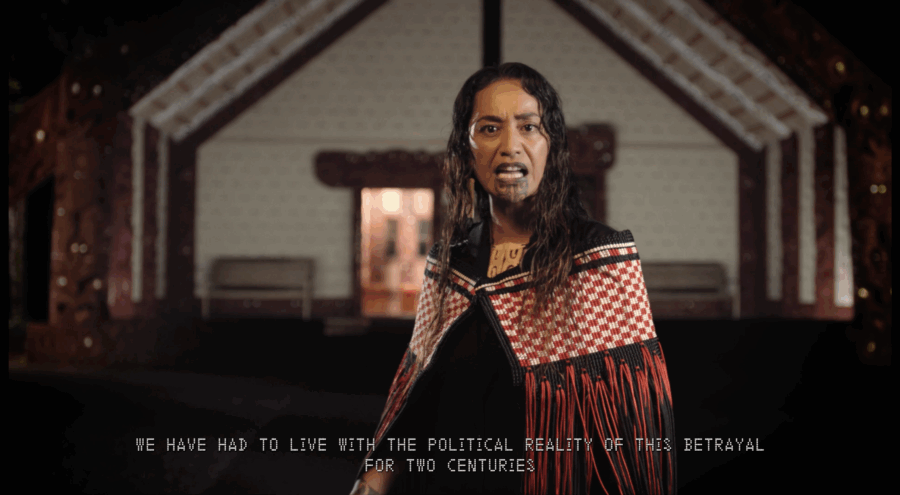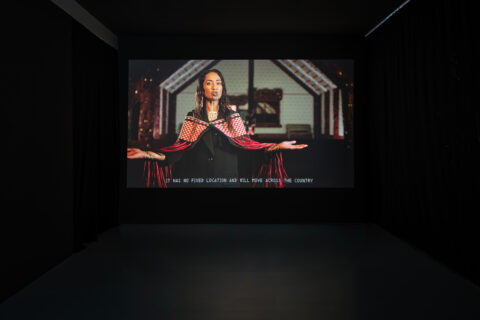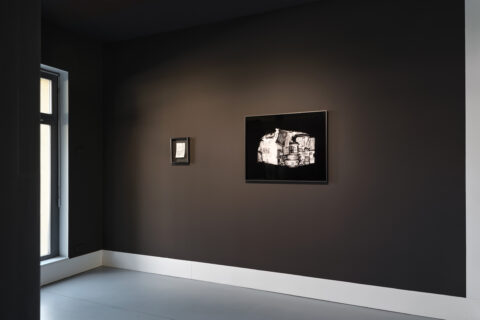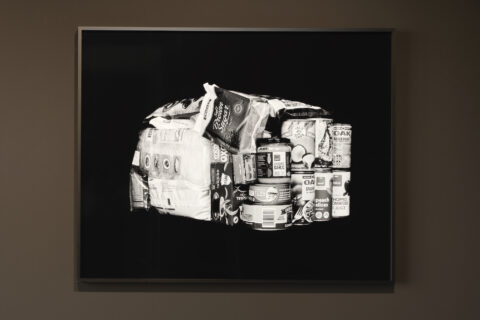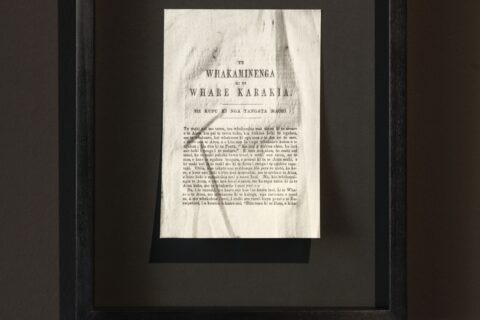Luke Willis Thompson Yes, Germany voted in favor of the UN Declaration on the Rights of Indigenous Peoples (UNDRIP) when it was adopted by the General Assembly on September 13, 2007.
13/06/2025 – 30/08/2025
Nagel Draxler Kabinett
Rosa-Luxemburg-Straße 33
10178 Berlin
Opening / Eröffnung:
Donnerstag, 12. Juni 2025, 18 – 21 Uhr
Thursday, June 12, 2025, 6 – 9pm
Öffnungszeiten / Opening hours:
Dienstag - Freitag 11 – 18 Uhr, Samstag 12 – 18 Uhr
Tuesday - Friday 11am – 6pm, Saturday 12 – 6pm
Press Release
*Please scroll down for the German version.*
Luke Willis Thompson (born 1988, Auckland, NZ) presents his new film Whakamoemoeā and two new photographic works that together explore the transformation of systems that govern and facilitate Indigenous life in Aotearoa New Zealand[1]. Yes, Germany voted in favor of the UN Declaration on the Rights of Indigenous Peoples (UNDRIP) when it was adopted by the General Assembly on September 13, 2007. is Thompson’s fourth solo exhibition at Galerie Nagel Draxler.
Filmed at Waitangi in Aotearoa’s North Island, Whakamoemoeā (2025) imagines an official state broadcast in 2040, delivered in the Māori language. It announces Aotearoa’s adoption of a new constitution, transitioning from colonial Westminster-style governance to an Indigenous plurinational state. The moving-image artwork draws on the 2016 report Matike Mai Aotearoa, championed by the late Māori lawyer and intellectual Moana Jackson. The report envisions a constitutional transformation in Aotearoa that recognizes Māori philosophies and the rights established by He Whakaputanga o Rangatiratanga o Nu Tireni (The Declaration of Independence) of 1835 and Te Tiriti o Waitangi (The Treaty of Waitangi) of 1840. In Whakamoemoeā, the 200-year struggle for Māori tino rangatiratanga or self-determination is finally realized. Oriini Kaipara[2] delivers the broadcast, tracing a history of alienation, dispossession, resistance, and resilience. “The radical promise to the next generation is simple,” she vows, “whoever you are, if you are on this land, you will be sheltered and cared for.”
– Hanahiva Rose
Luke Willis Thompson’s work has been featured in solo exhibitions at Moderna e Contemporanea di Bergamo (2019), Kunsthalle Basel (2018), Adam Art Gallery Te Pātaka Toi at Victoria University of Wellington (2018), Institute of Modern Art (IMA) in Brisbane (2016), and more. His work has also been included in group exhibitions at the Sharjah Biennale 16 (2025), Museum für Moderne Kunst in Frankfurt am Main (2018), Tate Britain in London (2018), the 10th Berlin Biennale (2018), and La Biennale de Montreal (2016), among others. In 2014, Thompson received the Walters Prize, and in 2018, he was awarded the 21st Deutsche Börse Photography Foundation Prize and nominated for the Turner Prize.
[1] Aotearoa is the Māori name for New Zealand
[2] In 2019, the New Zealand broadcaster, journalist and translator Oriini Kaipara was the first person with tā moko kauae facial tattoo to present mainstream television news, which gained worldwide attention.
_______________
Luke Willis Thompson (geboren 1988 in Auckland, Neuseeland) präsentiert seinen neuen Film Whakamoemoeā sowie zwei neue fotografische Arbeiten, die gemeinsam die Transformation der Systeme untersuchen, die das Indigene Leben in Aotearoa Neuseeland[1] regeln und ermöglichen. Yes, Germany voted in favor of the UN Declaration on the Rights of Indigenous Peoples (UNDRIP) when it was adopted by the General Assembly on September 13, 2007. ist Thompsons vierte Einzelausstellung bei Galerie Nagel Draxler.
Gedreht in Waitangi auf der Nordinsel Aotearoas, imaginiert Whakamoemoeā (2025) eine offizielle staatliche Rundfunksendung im Jahr 2040 in der Sprache der Māori. Sie verkündet die Annahme einer neuen Verfassung durch Aotearoa und den Übergang von einem kolonialen, nach Westminster-Modell geprägten Regierungssystem hin zu einem indigenen plurinationalen Staat. Die Videoarbeit stützt sich auf den Bericht Matike Mai Aotearoa von 2016, der von dem verstorbenen Māori-Juristen und Intellektuellen Moana Jackson initiiert wurde. Der Bericht entwirft eine konstitutionelle Transformation Aotearoas, die Māori-Philosophien sowie die durch He Whakaputanga o Rangatiratanga o Nu Tireni (Die Unabhängigkeitserklärung) von 1835 und Te Tiriti o Waitangi (Der Vertrag von Waitangi) von 1840 begründeten Rechte anerkennt. In Whakamoemoeā wird der 200-jährige Kampf der Māori um tino rangatiratanga, also Selbstbestimmung, endlich verwirklicht. Oriini Kaipara[2] übermittelt die Rundfunksendung und zeichnet dabei eine Geschichte von Entfremdung, Enteignung, Widerstand und Resilienz nach. „Das radikale Versprechen an die nächste Generation ist einfach“, gelobt sie, „wer auch immer du bist – wenn du auf diesem Land bist, wirst du Schutz und Fürsorge erfahren.“
– Hanahiva Rose
Die Arbeiten von Luke Willis Thompson wurden in Einzelausstellungen unter anderem in der Galleria d'Arte Moderna e Contemporanea di Bergamo (2019), der Kunsthalle Basel (2018), der Adam Art Gallery Te Pātaka Toi an der Victoria University of Wellington (2018) sowie im Institute of Modern Art (IMA) in Brisbane (2016) gezeigt. Auch in Gruppenausstellungen waren seine Werke vertreten, etwa bei der Sharjah Biennale 16 (2025), im Museum für Moderne Kunst in Frankfurt am Main (2018), in der Tate Britain in London (2018), bei der 10. Berlin Biennale (2018) sowie bei der Biennale de Montréal (2016). 2014 erhielt Thompson den Walters Prize, 2018 wurde ihm der 21. Deutsche Börse Photography Foundation Prize verliehen und er wurde für den Turner Prize nominiert.
[1] Aotearoa ist der Māori-Name für Neuseeland
[2] Die Moderatorin, Journalistin und Übersetzerin war im Jahr 2019 die erste Person, die Mainstream-Fernsehnachrichten mit einem moko kauae tā moko (ein māorisches Tattoo) präsentierte, dies erlangte weltweit Aufsehen.
